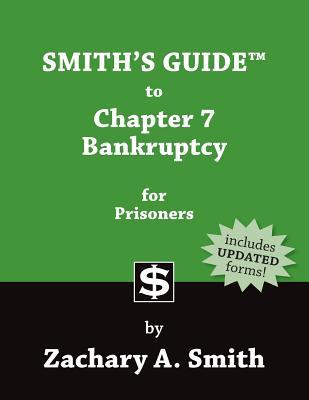When Zachary A. Smith's father died unexpectedly while Zachary was incarcerated, he received a small inheritance from his father's estate. The State of Missouri filed a civil suit against him under the Missouri Incarceration Reimbursement Act (MIRA). Smith secured a dismissal of the State's suit, but the State appealed and the dismissal was overturned. The court entered judgment against Smith, ordering the Missouri Department of Corrections to collect 90% of any money deposited into his inmate account by friends and family. Seeing that fighting the MIRA case in state court was getting him nowhere, Smith started researching United States Bankruptcy Codes and found a loophole. A fundamental goal of the federal bankruptcy laws enacted by Congress is to give debtors a financial "fresh start" from burdensome debts. In Local Loan Co. v. Hunt, 292 U.S. 234, 244 (1934), the Supreme Court made this point about the purpose of the bankruptcy law: It gives to the honest but unfortunate debtor...a new opportunity in life and a clear field for future effort, unhampered by the pressure and discouragement of preexisting debt. This goal is accomplished through the bankruptcy discharge, which releases debtors from personal liability from specific debts and prohibits creditors from ever taking any action against them to collect those debts. All SMITH'S GUIDES are made to be as helpful as possible (see also "SMITH'S GUIDE to Habeas Corpus Relief for State Prisoners Under 28 U.S.C. 2254," and "SMITH'S GUIDE to Executive Clemency for State and Federal Prisoners"). At the end of each chapter, the reader will find completed examples of the forms required to be filed in order to start their bankruptcy case. The reader will also find blank forms at the end of this book, which may be removed, filled out, and filed with the appropriate bankruptcy court. Of course, this book is not just for the type of debt discussed above, it is for the prisoner (or nonprisoner) who has outstanding debts and wants a fresh start. "SMITH'S GUIDE to Chapter 7 Bankruptcy for Prisoners" is an invaluable resource guide for prisoners and civilians alike, who need financial freedom from their past debts.

Smith's Guide to Chapter 7 Bankruptcy for Prisoners
When Zachary A. Smith's father died unexpectedly while Zachary was incarcerated, he received a small inheritance from his father's estate. The State of Missouri filed a civil suit against him under the Missouri Incarceration Reimbursement Act (MIRA). Smith secured a dismissal of the State's suit, but the State appealed and the dismissal was overturned. The court entered judgment against Smith, ordering the Missouri Department of Corrections to collect 90% of any money deposited into his inmate account by friends and family. Seeing that fighting the MIRA case in state court was getting him nowhere, Smith started researching United States Bankruptcy Codes and found a loophole. A fundamental goal of the federal bankruptcy laws enacted by Congress is to give debtors a financial "fresh start" from burdensome debts. In Local Loan Co. v. Hunt, 292 U.S. 234, 244 (1934), the Supreme Court made this point about the purpose of the bankruptcy law: It gives to the honest but unfortunate debtor...a new opportunity in life and a clear field for future effort, unhampered by the pressure and discouragement of preexisting debt. This goal is accomplished through the bankruptcy discharge, which releases debtors from personal liability from specific debts and prohibits creditors from ever taking any action against them to collect those debts. All SMITH'S GUIDES are made to be as helpful as possible (see also "SMITH'S GUIDE to Habeas Corpus Relief for State Prisoners Under 28 U.S.C. 2254," and "SMITH'S GUIDE to Executive Clemency for State and Federal Prisoners"). At the end of each chapter, the reader will find completed examples of the forms required to be filed in order to start their bankruptcy case. The reader will also find blank forms at the end of this book, which may be removed, filled out, and filed with the appropriate bankruptcy court. Of course, this book is not just for the type of debt discussed above, it is for the prisoner (or nonprisoner) who has outstanding debts and wants a fresh start. "SMITH'S GUIDE to Chapter 7 Bankruptcy for Prisoners" is an invaluable resource guide for prisoners and civilians alike, who need financial freedom from their past debts.